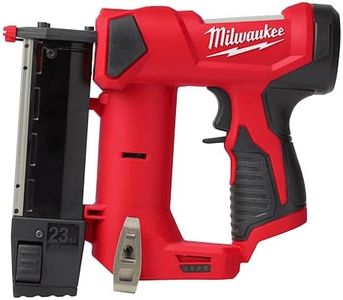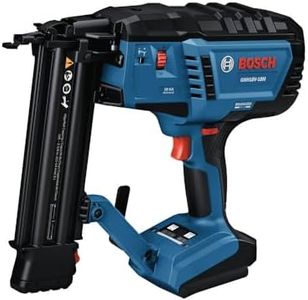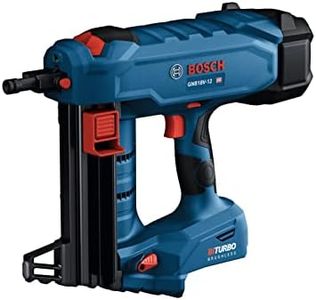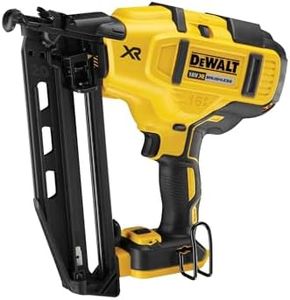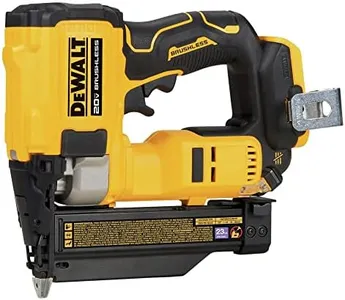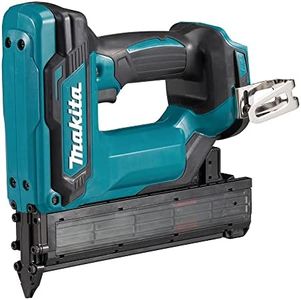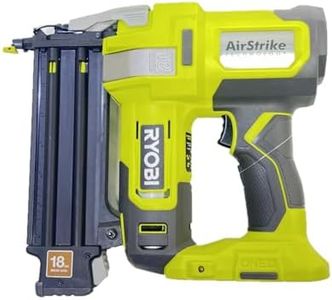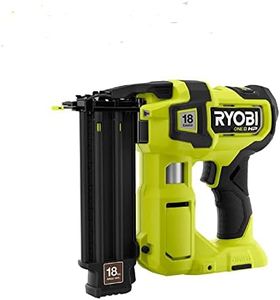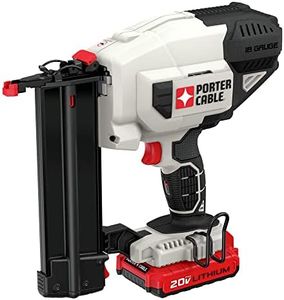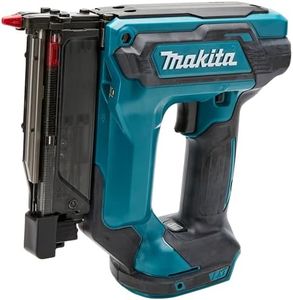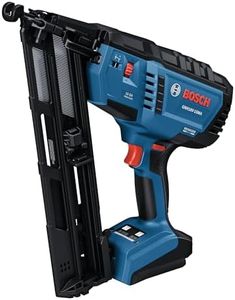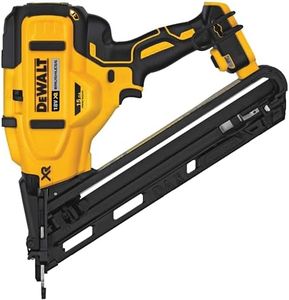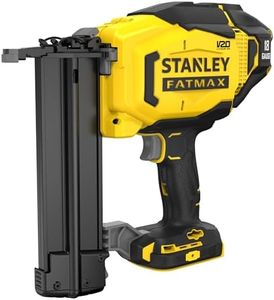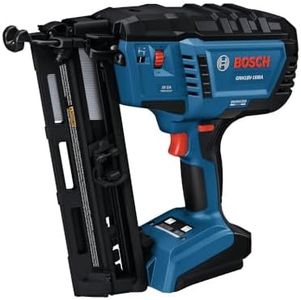We Use CookiesWe use cookies to enhance the security, performance,
functionality and for analytical and promotional activities. By continuing to browse this site you
are agreeing to our privacy policy
10 Best Cordless Nail Gun
From leading brands and best sellers available on the web.Buying Guide for the Best Cordless Nail Gun
Choosing the right cordless nail gun can make your woodworking, construction, or home improvement projects much easier and cleaner. The best nail gun for you depends on what kind of jobs you plan to tackle: furniture building, framing, finishing work, or even crafting. When looking for a cordless model, it's important to understand how different features affect convenience, power, and handling. Let your project requirements guide you, and consider how often you’ll use the tool and in what settings.Type of Nail GunThere are several types of cordless nail guns, such as framing, finish, brad, and stapler guns. Each is designed for specific tasks: framing guns are for heavy-duty construction, finish guns for trim and molding, brad guns for delicate woodwork, and stapler guns for upholstery or thin materials. Knowing your main task helps you select the type that matches your needs. For example, choose a framing gun for building a deck or framing walls, but a brad or finish nailer for furniture or interior trim.
Gauge and Nail SizeGauge refers to the thickness of the nail, and nail size is about their length. Lower gauge numbers mean thicker nails, which are stronger for heavy-duty jobs. Higher gauge (thinner) nails are better for lighter, finer work where splitting wood must be avoided. Nail length determines how deep you can fasten material. Choose lower gauges and longer nails for structural work, but higher gauges and shorter nails for small, neat tasks.
Power SourceMost cordless nail guns use either batteries alone or a combination of battery and small gas cartridges. Battery-only models are usually quieter and simpler, but may have less firing power for heavy tasks. Battery-plus-gas models often provide more consistent power for frequent, tough jobs. For everyday repair and light carpentry, battery-powered may be enough, while larger projects might benefit from the gas-assisted option.
Magazine CapacityThe magazine holds nails ready to fire. Higher capacities let you work longer without reloading but can make the tool heavier and bulkier. If you're often doing repetitive work, like securing siding or framing, a bigger magazine is helpful. For occasional or fine precision tasks, a smaller, lighter magazine is usually sufficient.
Weight and ErgonomicsWeight and grip design directly affect how comfortable and steady the nail gun feels during use. Lighter models reduce fatigue, especially in overhead or extended work sessions. Good ergonomics mean a comfy handle and well-balanced feel, making it easier to control precise placement of nails. If you expect to use the nail gun for long periods or in tight spaces, prioritize a lightweight, comfortable model.
Depth AdjustmentDepth adjustment lets you control how deep the nail is driven into the material. This is important for making sure nails don’t stick out or go too deep, depending on the thickness and type of material. Look for easy, tool-free depth adjustment if you work with different kinds of wood or switch projects often, so your results always look professional.
Safety FeaturesSafety measures like trigger locks, anti-dry fire mechanisms, and nose guards help prevent accidents and damage to both you and your materials. These features are crucial for beginners or anyone working in environments with children or pets nearby. Always consider models that have clear, simple-to-use safety options.
